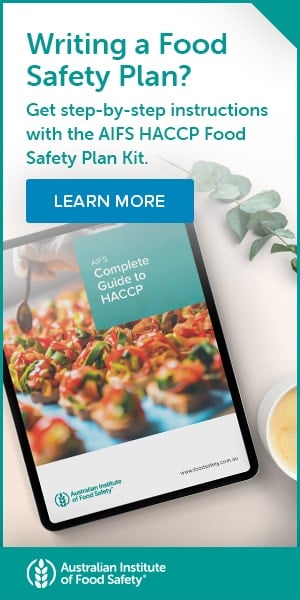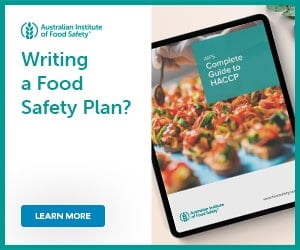
Food safety is a serious concern for any manufacturers who produce or package edible materials. In the 1960s, several companies came together to create a food safety and risk assessment plan.
Through this plan, called Hazard Analysis and Critical Control Points (HACCP), anyone can properly recognise risk and handle it in order to avoid any food contamination or code violations that could be a harm to the consumers.
There are seven principles of HACCP that need to be used and implemented in any food industry throughout the world. These principles include the following:
|
Principle |
Principle title |
Core purpose |
|
1 |
Conduct a hazard analysis |
Identify biological, chemical and physical hazards throughout the food production process. |
|
2 |
Identify Critical Control Points (CCPs) |
Determine steps where hazards can be prevented, eliminated or reduced to safe levels. |
|
3 |
Establish critical limits |
Set measurable safety thresholds (e.g. time, temperature, pH) for each CCP. |
|
4 |
Establish monitoring procedures |
Monitor CCPs to ensure they remain within established critical limits. |
|
5 |
Establish corrective actions |
Outline steps to take when monitoring shows a deviation from a critical limit. |
|
6 |
Establish verification procedures |
Review and validate that the HACCP system is functioning effectively. |
|
7 |
Establish record-keeping and documentation procedures |
Maintain accurate documentation of hazards, CCPs, monitoring, corrective actions and verification activities. |
1. Hazard Analysis
This process includes recognising any hazards to food safety in a particular manufacturing program. A plan should be put into place to prevent any danger from those hazards, which could include biological or chemical contamination.
2. Critical Control Points
The second principle is to recognise critical control points. These would be points in the manufacturing of the food that could pose the most risk. All hazards must be found and managed during this process.
Guide to Food Safety Laws & Regulations
3. Critical Limits
Control points will need critical limits. These limits, which include both minimums and maximums, must be followed. Any breaks in limits will need to be addressed and handled.
4. Critical Control Monitoring
This monitoring standard is set into place to ensure all critical control points are noted and watched for any changes that could lead to risk. Critical limits will also be monitored during this principle.
5. Corrective Action
There should be a plan for specific corrective actions should a hazard arise at a critical control point. This could include a critical limit minimum not being met, or alternatively, a critical limit maximum being overtaken. Corrective actions should be used immediately to avoid any injury or illness to humans from the hazard.
6. Procedures
A set of procedures should be set forth in order to ensure HACCP is always followed and implemented correctly in the food manufacturing workplace. All employees involved in the process should be able to verify the steps for which they are responsible.
7. Record Keeping
Any food manufacturing or packaging facility should keep verifiable and accurate records. This should include details of their own HACCP plan as well as their own established critical control points and critical limits. If corrective action has to be taken, then this should be documented as well.
Getting Started
There are any number of ways to get started on your road to HACCP success. A great way to get started implementing HACCP in your business is to get the AIFS HACCP Food Safety Plan Kit. The kit was designed for food businesses and provides all the tools and instructions to make getting started with HACCP that much easier.
HACCP is designed to ensure consumer safety by preventing as many food hazards as possible. If this plan is implemented properly, then injury or illness can be prevented. The standards and principles set forth by HACCP are implemented internationally.








